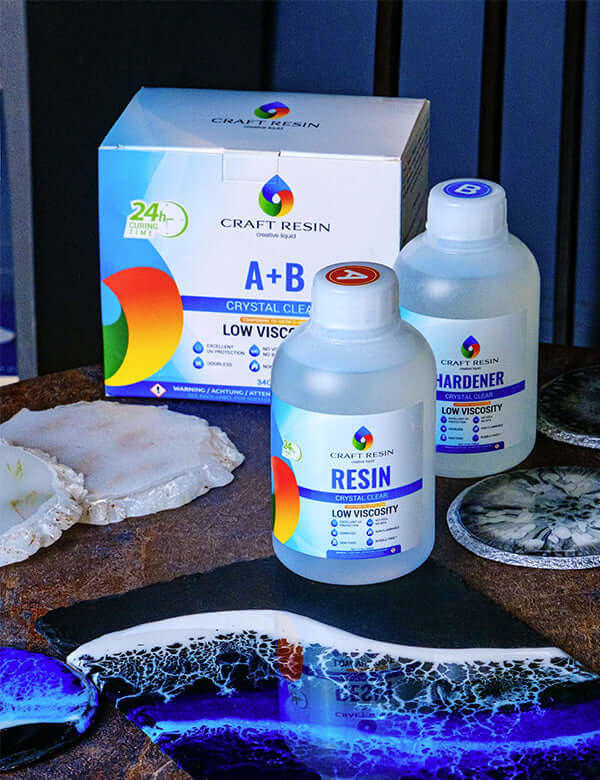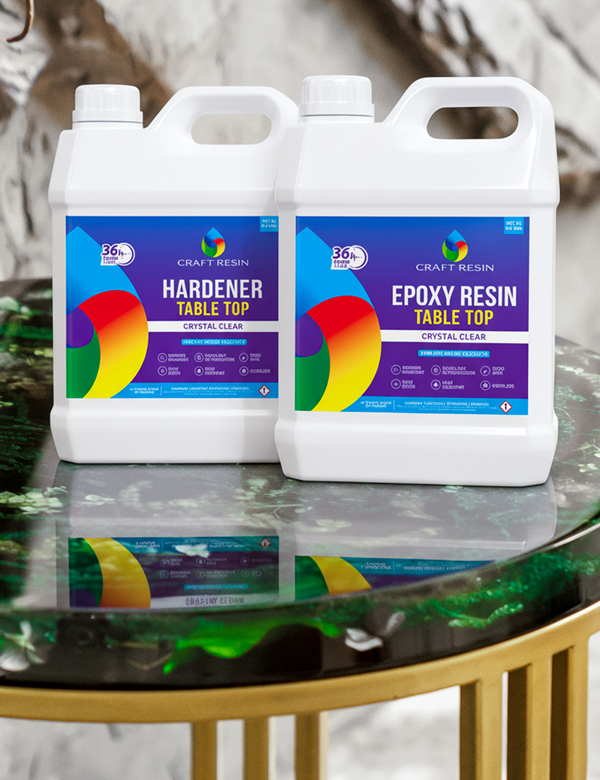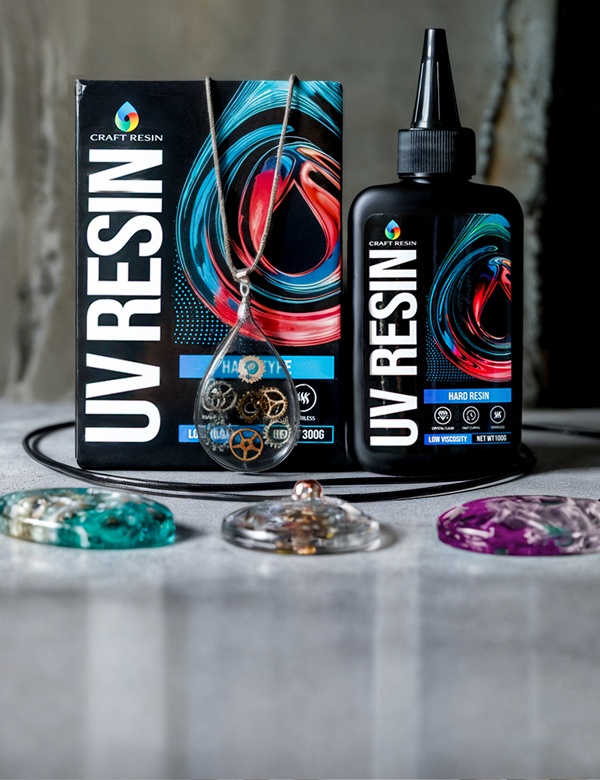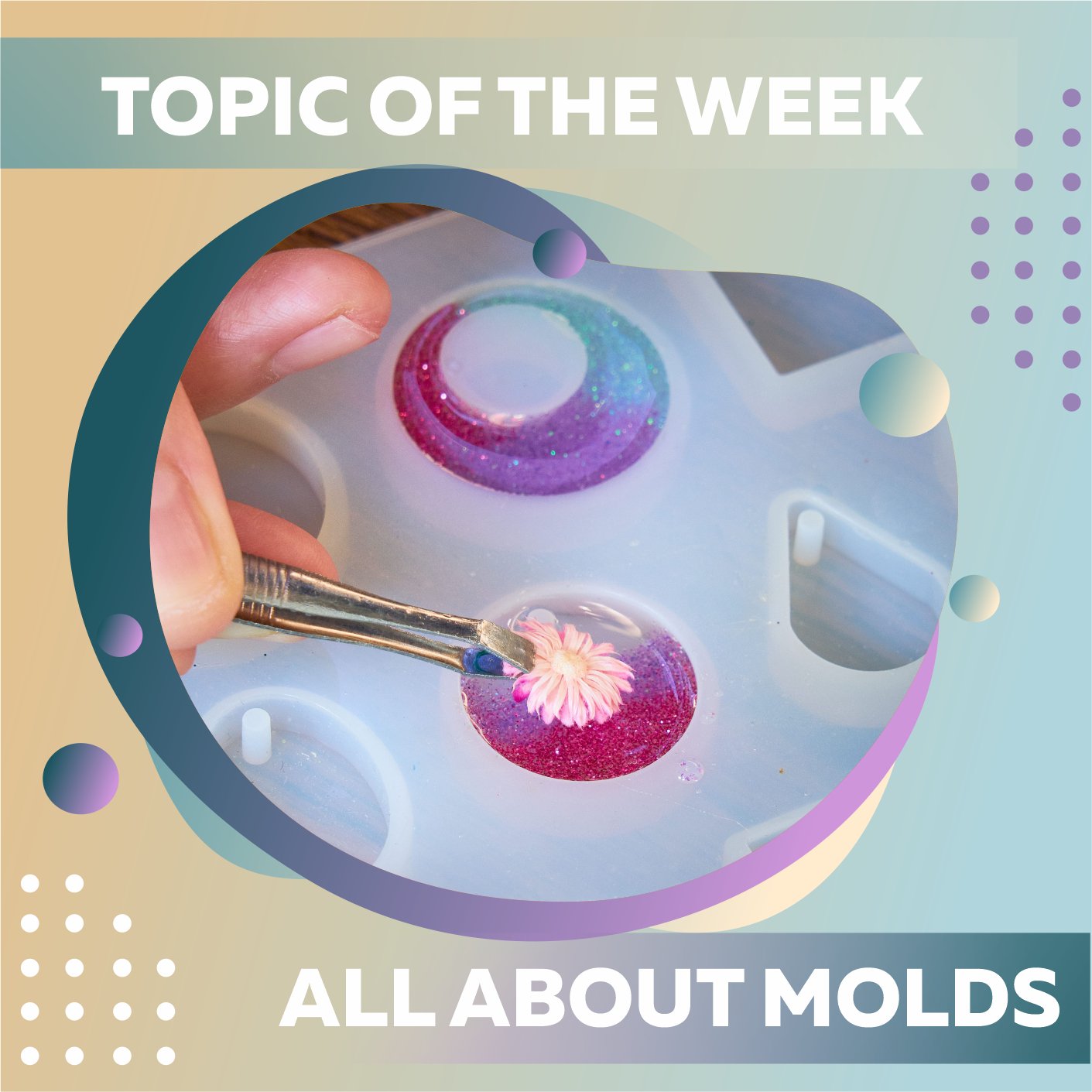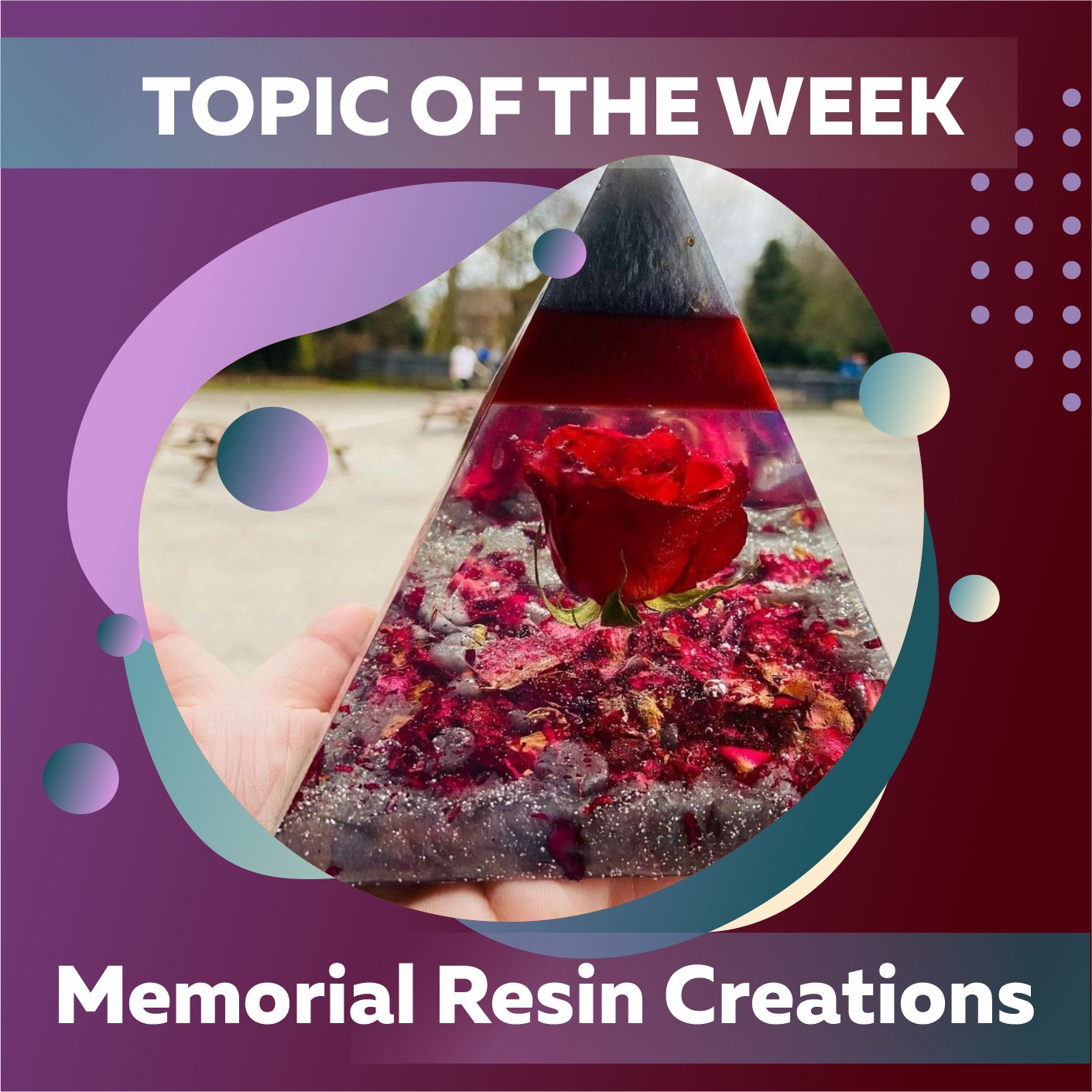In todays blog we wanted to dive into the world of molds with you. Because epoxy resin is a liquid and ours is a low viscosity resin so very runny, in order to create different projects you may need to cast your creations in a mold to keep the shape.
If you are using Craft Resin to cover artwork, or to fill in gaps in wood etc, then you may not need to use a mold at all. But when creating some resin coasters, jewellery, cake stands, to name a few things, then you most probably need to use a mold.

In this blog we’ll be covering:
- What you can use as molds & how to make your own
- Where you can get them from
- How to prepare them
- How to clean them
- How to store them
Molds come in various shapes, sizes, designs and materials. Which one you will use will very much depend on the project you would like to make.
What you can use as molds & how to make your own:
The most basic option that you can get to make your own mold is to use sellotape or brown tape. These can be used on top of non-porous boards to create the outline of a shape which creates a dammed area, which you can then pour your resin into. Make sure that the sticky side to the tape isn’t on the side the resin will be poured into, maybe fold the tape over to avoid this, pour the resin into the space where the shiny side is as it won’t then stick to the resin.
Once the piece is fully cured you can then remove the tape and board from underneath. The thing to look out for with this is to make sure that your tape is sealed, so it doesn’t leave any gaps, you may want to layer it up to make sure of this.
The downside to using tape is that it can be very difficult to make the exact shape that you desire with it. This may mean that you need extra sanding after your piece is cured to make it look exactly like you wanted it to.

Any plastic container can make a good mold, if you have silicone cake molds lying around that are the shape you desire to create these can work really well. However depending on the type of plastic used will depend on how easy it is to get the resin out afterwards. Silicone makes the removal quite easy.
Don’t use anything that you don’t want to have to damage to remove the resin, while you are getting the item out of plastic containers you may need to cut these away depending on the plastic used. The project then may need more sanding afterwards to again get the desired look.
Most importantly if you are creating your own molds accept that it may take some experimenting and they may not turn out exactly as you wanted it to at first.
If you’re making something like jewellery you can get things like open back bezels, and many different shapes and styles of closed back bezels too. These can add an extra touch to your jewellery as these will stay and become a part of the jewellery piece that you are creating. These can make beautiful pendants when adding resin and lots of variations of colours and patterns to them.

One of the best materials to use for molds is silicone, resin doesn’t stick easily to silicone and it is very flexible, meaning that it is relatively easy to get your resin out of after it is fully cured. You can make your own silicone molds and there are lots of YouTube videos which show you how to do this. Alternatively you can purchase many different silicone molds online and their price points can be very reasonable, especially as these are reusable.
Silicone molds can be used to cast pretty much anything you desire, from coasters, to pyramids, to the female form statues. The shapes and styles of silicone molds you can purchase are vast.

With all molds it is worth purchasing a release agent, this will help when it comes to de-molding your work, it will stick less and be easier to remove. This is especially useful for larger projects, and you will limit the danger of damaging your work or your mold too. You can again purchase these from Amazon, simply search ‘mold release spray for resin’ and a selection will come up.
Where you can get them from:
We don't supply molds at Craft Resin, but we wanted to share some information about them as they are an integral part of creating resin art.
There are always lots of independent businesses that create many different shaped and sized molds, some that can even create them bespoke to your needs. A lot of these smaller businesses can be found within our Facebook Community Group, as people will recommend them when they get a great mold from them.
You can also purchase molds from places like Amazon, Ebay, Etsy. If you see a creation that you like that someone else has made, usually they will happily share where they got the mold from, and may even have a discounted link you could use to purchase it from.
Be careful when buying molds online if you’d like a glossy look to your work, some molds are matte molds and so no matter how much you try to polish your projects made in matte molds you won’t be able to gloss them up again. Normal molds used with Craft Resin will leave a great glossy finish naturally.
Looking after your molds:
Molds won’t unfortunately last forever, but if you do purchase a good one and look after it following the guidance below, you’ll have every chance to make it last a long time.
If you do notice changes in your resin work over time, and you haven’t changed any of the techniques, or brands of resin, we would suggest looking closely at your molds and seeing if they could be the cause of the undesirable results. Usually your resin work will tell you when a mold is no longer useable.
The guidance in this blog will relate to silicone molds, but some of the tips can be great for other molds too.
How to prepare your molds:
Some people use alcohol mist/spray to coat their molds prior to using them, this enables them to reduce the chance of bubbles appearing on the mold side of the project. Of course bubbles can be dispersed by a heat gun on the top, but not underneath when in the mold, so this can be good for that task if you do find yourself getting bubbles under your project.
Usually with Craft Resin the simple act of warming your resin will help bubbles disperse anyway and so you may not actually need to do this step. If you do chose to use alcohol mist/spray on your molds be very careful making sure that there is lots of ventilation in your room and also that you are wearing a mask/respirator.
Note: Be very careful if you do go near your molds with any flames after spraying alcohol mist/spray on your molds, as it can set alight and catch fire!
We would suggest trying it without this step at the start and seeing if you can work without it if at all possible.
What you can spray onto your molds before pouring in your resin is a silicon release spray, spray it onto the molds lightly and then leave it for about a minute before pouring your resin. This will help when the resin is cured and you are demolding, the resin will release much easier when this technique is used.
How to clean your molds:
When you have poured your resin you will probably find that you do get some of the resin in places around your molds, do not worry if this does happen because it can be removed after the curing stage very easily, especially with silicone molds.
Once you have removed your resin project from the mold you’re going to need to clean your mold as soon as possible. You might be able to remove some or the resin, by gently peeling it with your hands or wiping off with something gentle like baby wipes to get the initial resin off the molds.
If there are any stubborn bits of resin left in the mold that you can’t remove easily then you might want to try soak the mold in hot water, not boiling, enough that it will turn the resin back into a liquid and you’ll be able to easily remove it.
An alternative to this is to put the mold in the freezer for about 10-15 minutes and this then helps the resin to come out easier without damaging the mold in any way.
When cleaning your mold you should stay away from using alcohol, this can damage your mold and degrade the mold quicker than it normally would. It can also dull your mold, meaning that it takes the shine out of your resin projects. If you notice this happening, there is no way to reverse this, you will need to consider purchasing a new mold - Sorry!
All you really need for cleaning molds is warm soapy water, you can use traditional washing up liquid for this task. Simply fill up a bowl with the warm soapy water and leave the molds in it to soak for a short while, about 15 minutes will be plenty of time for this.
Once they have soaked for a little while you can use a soft sponge to clean off the resin from the molds while they’re still in the water. If you are using a sponge with a course side, please make sure you don’t use this side as it will scrape and damage the molds.
Once they are cleaned you can rinse the soap bubbles off the molds and then place them to the side on a clean cloth to enable them to air dry naturally. If you use a cloth to dry them, fibres from the cloth could get on them and then get into your next resin project. To stop getting any particles on them at this stage you could cover them with kitchen roll.

How to store your molds after use:
Once completely dry you can then think about how you’re going to store them. What we like to do is give them a spray of silicone release spray, then put these to the side to once again dry. This simple step can really help to preserve your molds and help extend their life span.
What you then want to do is get something like sandwich bags, or ziplock bags to store your molds in. Simply put the dry molds into these, one at a time, and squeeze out as much air as possible before sealing.
Try to make sure the molds are stored flat and not squashed at all, when they are stored and left in distorted ways they can then take on this shape and stay like that forever. You can then place them onto a shelf neatly and they can be stored like that for a very long time.

We hope this helps you keep your molds going strong for longer and reduces the amount of replacement molds you need to purchase along your resin journey.
If you have any of your own tips that you would like to share on this subject, please pop them in the comments below this blog, we’d love to hear from you.
Topic Of The Week Giveaway:
We have attached a giveaway to these Topic Of The Week announcements on our Instagram platform, this is helping us to spread the knowledge of how to use epoxy resin further, but also enabling anyone who helps us share this information to win free resin and mica powders.

To enter the weekly giveaway please see the latest post #CRWEEK44 on our Instagram feed/highlights and follow the instructions to enter:
We hope you get lots of use out of your molds, and you get to create from them for many years to come.
Team Craft Resin

